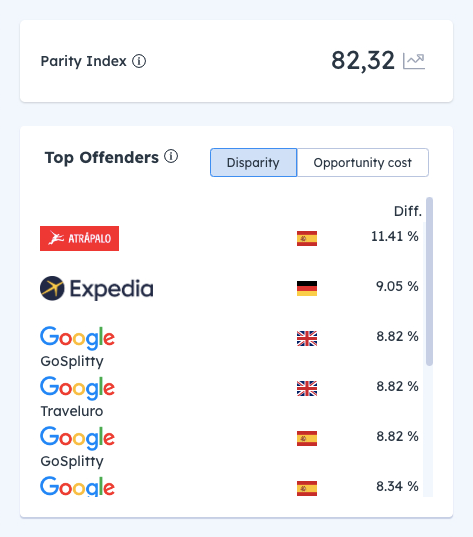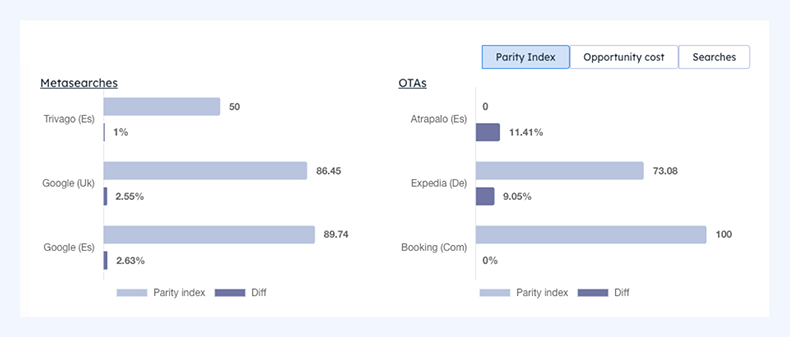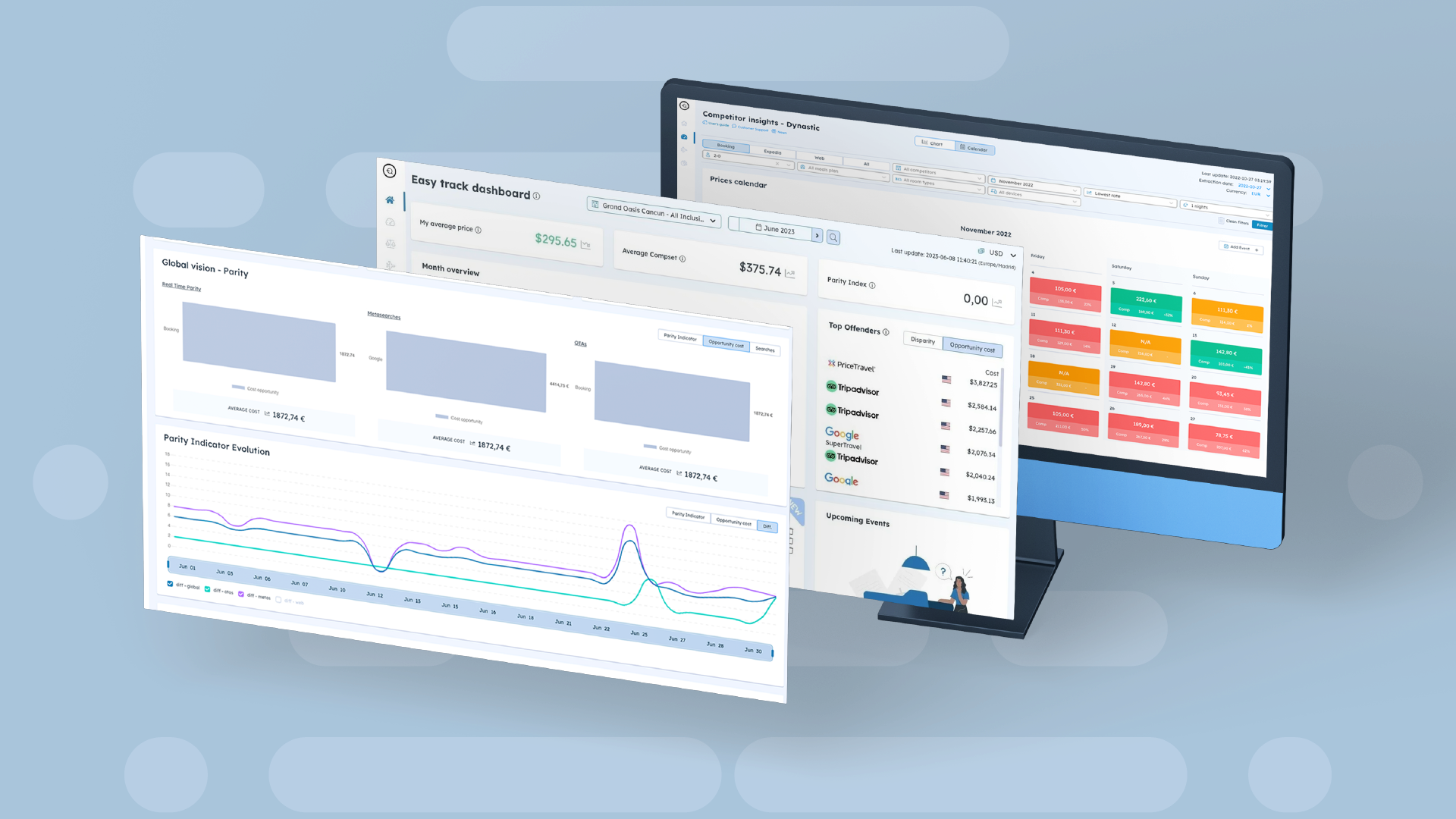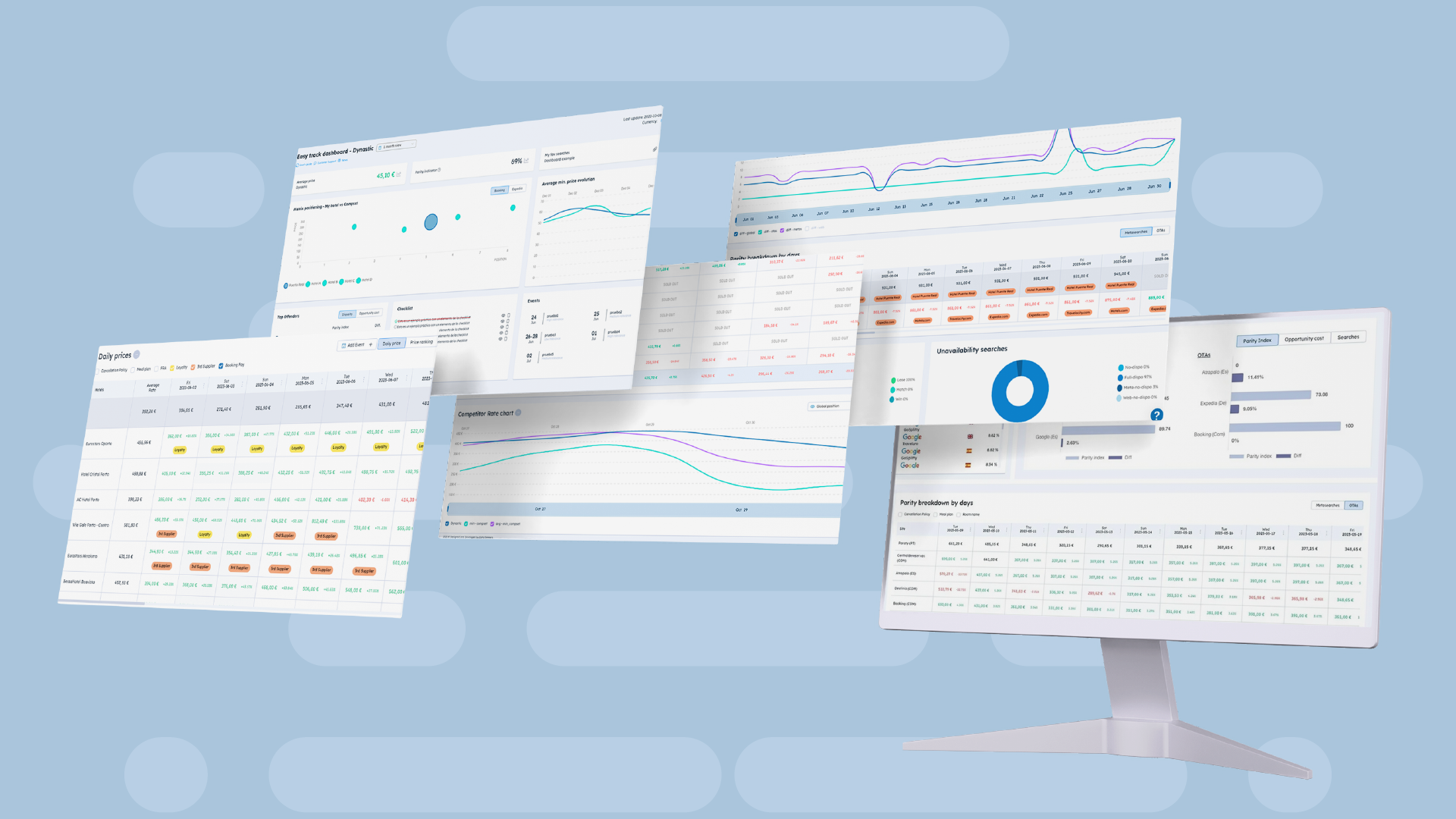To be or not to be in parity: an error of approach
Revenue 09/05/2023Times have changed
Although it is unthinkable now, there was a time, many years ago, when there were satisfied or dissatisfied customers. A comment could be positive or negative. In other words, there were no degrees of satisfaction, because there was no way to quantify it, to assign it a value.
Then came companies like Booking and Tripadvisor which, even back then, understood and anticipated the leading role that guest reviews would play in the future, and invented a new way of measuring the degree of satisfaction, offering the possibility of assigning a rank to the reviews. Not only that, but different aspects of the stay could also be rated by giving different grades for issues such as cleanliness, location, staff treatment, facilities, gastronomic quality, etc. Nowadays, we apply all these values together to define the quality of a service.
Price parity does not exist
Something very similar happens with parity. Beyond those who speak of the end of parity, or refer to it as a utopia, the truth is that almost everyone tends to simplify the analysis of parity, reducing it to two possible options: I control it (I am in parity), or I do not control it (I am not in parity). Once again, this is a very biased view, which avoids an approach to which we do give a great deal of credit: the degree of parity. An indicator that has a direct impact on a hotel's operating data and, therefore, on its income statement.
We will not deny the evidence. It is indisputable that avoiding disparities 100% is practically impossible, as it does not depend solely on our distribution network, nor on our work. Unfortunately, and sometimes, contrary to what is specified in the contracts we sign, certain channels have, in turn, many other collaborators who are the ones who end up selling the beds that we had given to the primary collaborator.
And in this "chain of favors", it is very difficult to maintain control and detect certain disparities. But this is one thing, and to resign oneself to it, or what amounts to the same thing, to forget about price parity, under the argument that, whatever I do, it is beyond my control, is quite another. Price parity is one of the basics of hotel direct selling, and measuring it is essential to guarantee the success of our strategy.
Precisely for this reason, at Price Seeker we decided to "cook" the Parity Index, an exclusive indicator based on our own algorithms, which establishes a system for measuring parity management, assigning it a value that moves in a range from 0 (the worst possible management) to 100 (the best possible management). In short, the Parity Index offers a very interesting reading that tells us how efficiently or poorly we are managing parity.
Today, there are already many large hotel chains on the national scene that are governed by this criterion. The Parity Index works for them as a guide for the preparation of a clear commercial strategy and a healthy distribution mix. It also serves as a tip-off that identifies and minimizes channels that operate without control and that only contribute to generate discrepancies that damage the brand image and prevent a defined and efficient revenue management.
How the parity index works
Next, we will try to explain in a simple way how the Parity Index works, although it is important to take into consideration that the algorithm has defined a very precise valuation that responds to the heterogeneous casuistry of the different types of tourist accommodation.
Rating system
- Parity Index is 0: all searches are in discrepancy.
- Parity Index is 100: all searches match the official price.
- Parity Index is any value between 0 and 100: this value corresponds to the degree of discrepancies detected, based on different criteria, such as discounts, visibility, commission and conversion, among others.
Price Seeker V4 users have the Parity Index at their disposal to manage their parity, and the best way to exploit the potential of this indicator is to follow a few simple steps:
- Log in to your Price Seeker V4 environment with your credentials.
- In the Easy Track Dashboard, identify the Parity index and your Top Offenders (the channels that are generating the most disparities).
- Access the Parity dashboard by applying the desired filters.
- Detect the metasearch engines and OTAs that have the lowest Parity Index and are offering the highest differential.
- Check the main table paying special attention to the numbers marked in red to verify the prices offered.
- Detect disparities through the OTAs and Metas detail table.
- Go as deep as you want using the filtering system.









